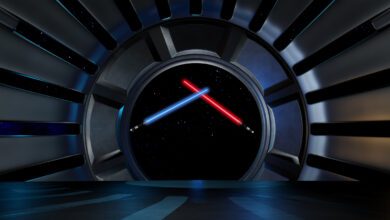
Somewhat lost in the noise of the national election, the American space industry took another giant leap for mankind on 16 November, when the first NASA-certified private spacecraft successfully docked with the International Space Station (ISS).
NASA astronauts Michael Hopkins, Victor Glover, and Shannon Walker, along with Japanese astronaut Soichi Noguchi, successfully boarded the ISS at 11 p.m. EST Monday night following their launch from the Kennedy Space Center Sunday. The Crew Dragon spacecraft, owned by SpaceX, was dubbed ‘Resilience.’ The spacecraft’s journey to the ISS was smooth and uneventful. This marks the first of six NASA-certified commercial system flights; Bob Behnken and Doug Hurley participated in the Demo-2 test mission of the Crew Dragon capsule earlier this summer.
Astronauts Hopkins, Glover, Walker, and Noguchi will spend the next six months onboard the ISS conducting scientific experiments and performing space walks to repair any damage to the space station. One experiment will test how spaceflight affects brain function on long-duration space missions. The findings of this study will be integral as NASA prepares for the upcoming Artemis missions to the Moon and Mars. The astronauts will also witness the docking of several uncrewed spacecraft flight tests, including the Boeing CST-100 Starliner.
The manned launches of the SpaceX Crew Dragon from the United States are the first from American soil since the retirement of the Space Shuttle. They are an essential part of NASA’s Artemis missions, a detailed plan for returning humans to the Moon and traveling onward to Mars. Artemis promises to bring the first woman to the moon as part of plans to re-establish an American presence on Earth’s satellite.
Currently, NASA has scheduled the next manned mission to the Moon in 2024. This will be the first step in creating a lunar base, the Artemis Base Camp, for future Moon exploration missions. If successful, the base will include a lunar terrain vehicle and habitable mobility platform to assist in long-duration stays on the Moon. The Artemis missions depend on collaboration with private companies. SpaceX and Blue Origin have been selected to work on the human landing system (HLS) to land astronauts on the Moon and, once their lunar stay comes to a close, securely put them into lunar orbit.
NASA’s plan to collaborate with private companies to lower the cost and increase the efficiency of future space exploration efforts is consistent with IEEE-USA’s position that the private sector must play a central role in American space policy. In addition, SpaceX’s ability to reuse rocket boosters drastically reduces the cost of spaceflight; IEEE-USA believes reusability of space vehicles is crucial to the success of long-term space exploration goals.
IEEE-USA will continue to monitor the progress made on American space exploration and continue to support private companies’ spaceflight initiatives.
Kayla Henneberry is policy associate for IEEE-USA government relations.






